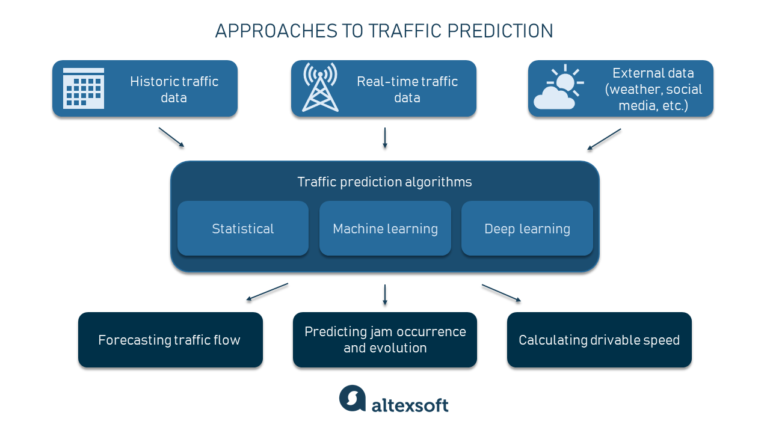A new machine learning model can predict traffic activity in different zones of cities. To do so, a Complexity Science Hub researcher used data from a main car-sharing company in Italy as a proxy for overall city traffic. Understanding how different urban zones interact can help avoid traffic jams, for example, and enable targeted responses of policy makers—such as local expansion of public transportation.
Understanding people’s mobility patterns will be central to improving urban traffic flow. “As populations grow in urban areas, this knowledge can help policymakers design and implement effective transportation policies and inclusive urban planning,” says Simone Daniotti of the Complexity Science Hub.
For example, if the model shows that there is a nontrivial connection between two zones, i.e., that people commute from one zone to another for certain reasons, services could be provided that compensate for this interaction. If, on the flip side, the model shows that there is little activity in a particular location, policymakers could use that knowledge to invest in structures to change that.
Model also for other cities like Vienna
For this study a major car-sharing company provided the data: the location of all cars in their fleet in four Italian cities (Rome, Turin, Milan, and Florence) in 2017. The data was obtained by constantly querying the service provider’s web APIs, recording the parking location of each car, as well as the start and end timestamps. “This information allows us to identify the origin and destination of each trip,” Daniotti explains.
Daniotti used that as a proxy for all city traffic and created a model that not only allows accurate spatio-temporal forecasting in different urban areas, but also accurate anomaly detection. Anomalies such as strikes and bad weather conditions, both of which are related to traffic.
The model could also make predictions about traffic patterns for other cities such as Vienna. “However, this would require appropriate data,” Daniotti points out.
Outperforming other models
While there are already many models designed to predict traffic behavior in cities, “the vast majority of prediction models on aggregated data are not fully interpretable. Even though some structure of the model connects two zones, they cannot be interpreted as an interaction,” explains Daniotti. This limits understanding of the underlying mechanisms that govern citizens’ daily routines.
Since only a minimal number of constraints are considered and all parameters represent actual interactions, the new model is fully interpretable.
But what is prediction without interpretation?
“Of course it is important to make predictions,” Daniotti explains, “but you can make very accurate predictions, and if you don’t interpret the results correctly, you sometimes run the risk of drawing very wrong conclusions.”
Without knowing the reason why the model is showing a particular result, it is difficult to control for events where the model was not showing what you expected. “Inspecting the model and understanding it, helps us, and also policy makers, to not draw wrong conclusions,” Daniotti says.
The paper is published in the journal Scientific Reports.
More information:
Simone Daniotti et al, A maximum entropy approach for the modelling of car-sharing parking dynamics, Scientific Reports (2023). DOI: 10.1038/s41598-023-30134-9
Provided by
Complexity Science Hub Vienna
Citation:
Predicting city traffic using a machine learning model (2023, February 28)



